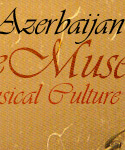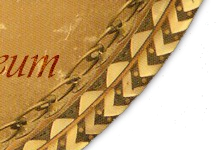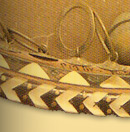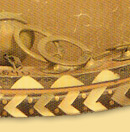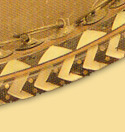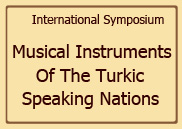Tar

Listen

|
According to its technical and dynamic capabilities, the contemporary tar is
considered to be the most improved of the Azerbaijani string instruments. Uzeyir
Hajibeyov wrote the following about the technical and acoustic capabilities of
the instrument: “The tar is the most important and the most valuable of
instruments in Eastern musical education.”
In Persian, the word “tar” means “string” or “wire”. Like other musical
instruments, the contemporary tar was formed on the basis of its predecessors
and has followed a long path of development and improvement.
The tar is referred to in the works of medieval classical poets such as
Gatran Tabrizi, Nizami Ganjavi and Mahammad Fuzuli. The tar is mentioned in
Nizami Ganjavi’s “Iskandarname”:
Singer, play the tar one more night,
Give me relief from this
torment!
Maybe a way will open for me,
Maybe I can get free of this
place.
There are various kinds of tar, such as the “du-tar” (two-stringed tar in
Persian), “seh-tar” (three-stringed tar), “chahar-tar” (four-stringed tar),
“panj-tar” (five-stringed tar) and “shesh-tar” (six-stringed tar). Abdulgadir
Maraghayi wrote about a six-stringed tar in his work entitled
“Magasid-al-Alhan”.
The tar is depicted in medieval paintings. In this respect, it would be
relevant to mention the oil painting “A Girl Playing Tar”, which was made by Abu
Gasim Tabrizi in 1816.
Mirza Sadig Asad oghlu (Sadigjan) (1846-1902) introduced changes in the
structure and form of the tar. He also increased the number of strings from 5 to
11. Sadigjan changed the position of the instrument during performances; before,
the tar was held on the knees. After the changes introduced by Sadigjan, the tar
was held against the chest.
The tar underwent intensive development during the 20th century. It was the
leading instrument in the orchestra of national instruments created in 1931 by
Uzeyir Hajibeyov and Muslim Magomayev. The score-based tar performance
instituted by Hajibeyov increased the technical and artistic capabilities of the
instrument.
The tar was and still is used as the main instrument in a mugham trio (tar,
kamancha and gaval) and continues to play a significant role in the development
of the mugham art today. Solo vocal parts in mugham operas are accompanied by
the tar. A number of Azerbaijani composers have composed concertos for tar and
orchestra.
The structure and form of the tar is different from that of other string
instruments. The tar has three main parts: the body, neck and head. The body is
made of mulberry wood, and the neck and head are made of walnut. Its total
length is 850 mm. The body is 165 mm tall and 185 mm wide.
There are 22 frets fastened to the neck of the instrument. The body is
covered with film made of a cow’s heart (heart pleura). The instrument has 11
strings of various thicknesses. The instrument is played with the help of a
plectrum made of ebonite or bone.
The tar has three kinds of strings:
1. White, yellow and root strings (each in a pair)
2. Root string
(unary) (a single thick string that is used
only in mughams)
3. Ring
strings (jingana) (two pairs)
The tar is held horizontally against the chest. Its body is pushed against
the performer’s chest with the help of the right wrist. The neck is held in the
left hand. The player holds the plectrum in the right hand and presses the frets
with the fingers of the left hand.
The player plays trills and other ornaments (vibrato, glissando) with the
help of a plectrum. One method is to strike the string with the plectrum and
then press the instrument against the chest for a few seconds. This makes the
sound vibrate for a certain period of time. The effect produced during such a
pause is called a “khum”.
Scores for the tar are written in the mezzo-soprano clef of the “do” system.
The sound scale of the tar is chromatic and covers two and a half octaves. The
range of sounds is from the “do” of the small octave to the “sol” of the second
octave. It is possible for the tar to reach “la flat” and “la” as well.
|

